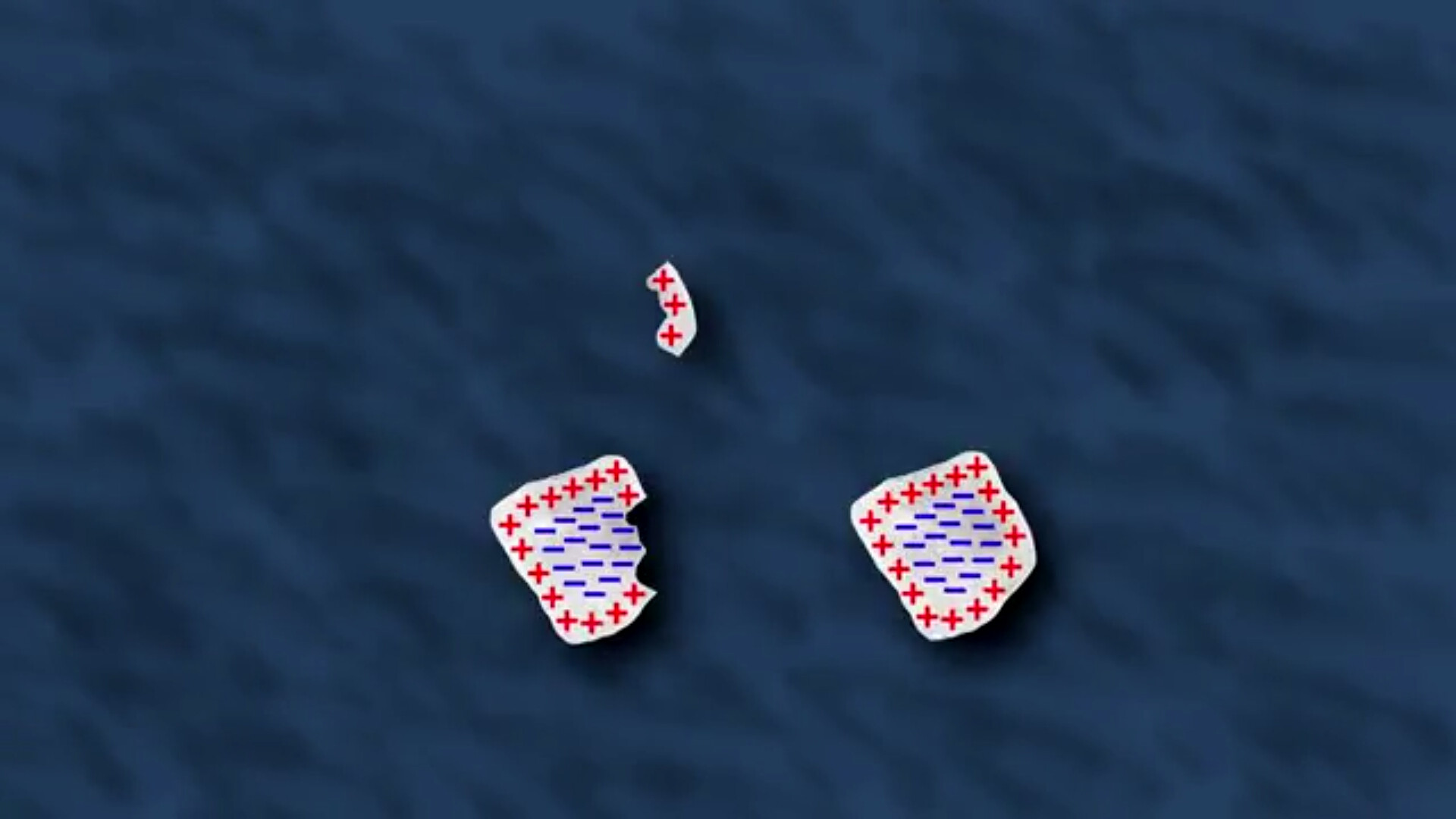In the following, I am not going to critique the video's explanation, but rather answer the questions posed by the OP.
What caused the water molecules in ice crystals to be arranged in that specific pattern i.e. having positive charges at its boundary and negative in the inner region ?
Electric fields do work to get rid of themselves. So if an insulator or semi-conductor (or isolated conductor for that matter) accumulates charge in one spot, the unbalanced forces due to the new electric fields will act to minimize the electric potential. That is, they will force the charges as far apart as possible. Since the fields generally are not strong enough to eject the charge-carrying culprits, they get stuck on the surface of the charged object. This is a kind of cartoon picture of why charges accumulate on the surface of things, not completely rigorous.
So in regards to that picture, I don't think it needs to be seen as clumps of positive and negative charges separating as such. Rather, ice crystals can charge up due to processes resulting from the friction occurring during crystal-crystal collisions (similar to rubbing a piece of glass or plastic with felt). The object either gets a positive or negative net charge and this typically starts on the surface anyways.
Also WHY do the crystals break (which created or may have led to the distribution of charges in the way given in the figure) ?
Why wouldn't they break if they collide? Ice is not indestructible or infinitely deformable. If you drop an ice cube on the floor, it is very likely to break, correct? So why would two colliding ice crystals not break if they hit each other fast enough?
(Since the outer regions have positive charges two crystals approaching each other should finally come at rest before striking each other and no collision should occur).
No, not necessarily. It is possible to have enough kinetic energy that the two ice crystals overcome the electric potential energy. Note that the ice crystals are no where near fully charged, i.e., not every atom has a net charge. Unlike a proton or electron, the charge to mass ratio of the ice crystals is going to be tiny. This is similar, in many ways, to micron-sized dust particles that collide in the interplanetary medium. The dust grains tend to be positively charged, but the total charge is incredibly small relative to what it would be if all atoms carried the same net charge. Thus, their kinetic energy usually dominates the interactions when they collide.
What is the cause of this way distribution of charges (as shown in the figure) ?
I am inclined to think that the figures are cartoons, i.e., they are not exactly what you may be thinking. If you accumulate charge on an object, you can cause a polarizing effect within the object but it's not physically the same as having positive charges surrounding a clump of only negative charges. That is not possible. As I said before, the electric fields would do work to eliminate such large charge separations.



